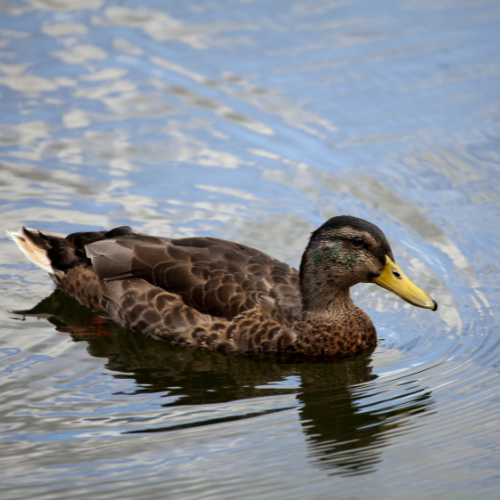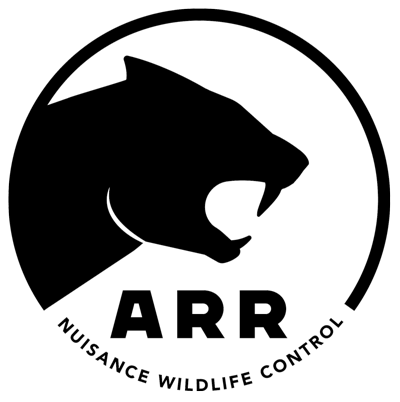Ducks, while often seen as charming and harmless, can become a significant nuisance, particularly in the central and southwest Florida areas. ARR Nuisance Wildlife Control is well-versed in managing these situations, ensuring that the delicate balance between human habitation and wildlife is maintained without causing undue harm to either.
In Florida, various types of these birds are found, including the familiar Mallard and the Muscovy duck. While they add to the region's natural beauty, their presence in urban settings can lead to several problems. One of the main issues is property damage. These animals, in their search for food and nesting areas, can destroy landscaping, leave droppings that corrode building materials, and even cause slip-and-fall hazards. Furthermore, their droppings can carry diseases like E. coli and Salmonella, posing health risks to humans and pets.
Another problem is the aggressive behavior displayed by some species, especially during mating season. This can lead to uncomfortable encounters for residents and visitors. Additionally, these pests can attract predators like foxes and alligators, introducing further dangers into residential areas.
Many residents may consider tackling this problem themselves. However, DIY methods often fall short for several reasons. First, without proper knowledge and experience, it's challenging to control these animals effectively and humanely. Improper handling can lead to injury for both the person and the animal. Also, many home remedies are ineffective and can even exacerbate the problem, leading to a larger population in the long run.
There are interesting and lesser-known facts about these creatures that highlight the complexity of dealing with them. For instance, ducks are highly adaptable and can quickly become accustomed to human presence, making them bolder in their interactions and harder to deter. They also have a remarkable homing ability, often returning to the same location year after year, which can make long-term control challenging. It's noteworthy how quickly a small group of these animals can become a large problem. A single pair can lead to dozens of offspring in a single breeding season, rapidly escalating the situation.
ARR Nuisance Wildlife Control employs a range of humane and effective strategies to manage these animals. This includes habitat modification to make the area less attractive to them, installing barriers to prevent access to nesting sites, and, where necessary, safe and humane relocation. The company is well-versed in local laws and regulations regarding wildlife control, ensuring that all actions are compliant with legal requirements.
Preventive measures are also a significant part of the company's approach. By advising property owners on how to make their spaces less inviting to these animals, future problems can be mitigated. This might include recommendations on landscaping changes, waste management practices, and the use of deterrents.
Education is another critical aspect of ARR Nuisance Wildlife Control's services. By informing the public about the habits and behaviors of these animals, the company aims to foster a better understanding of why they become a nuisance and how to coexist with them safely and responsibly.
In summary, while ducks are an integral part of Florida's wildlife, their presence in urban areas can cause significant issues. ARR Nuisance Wildlife Control offers expert services to address these challenges, balancing the need for humane treatment of wildlife with the safety and well-being of human residents. With a focus on prevention, education, and effective control methods, the company is dedicated to resolving conflicts between humans and these feathered residents in a way that respects the needs of both.
Frequently Asked Duck Questions
Q1. Why do some ducks have different feather colors in different seasons?
A1. Ducks, particularly males, often undergo a dramatic change in feather coloration between seasons. This phenomenon, known as "eclipse plumage," occurs after the breeding season. During this time, male ducks replace their bright, distinctive breeding feathers with duller feathers that resemble the females'. This change helps them blend into their surroundings better, offering protection from predators while they molt and grow new feathers. The bright plumage returns as the next breeding season approaches, helping them attract mates.
Q2. Can they recognize human faces?
A2. While research on duck cognition is still developing, studies in bird intelligence have shown that some bird species can recognize individual human faces. Ducks, like many birds, have good memory and vision, which could potentially allow them to distinguish between different people, especially if they have regular interactions with humans. However, this ability varies widely among individuals and species, and more research is needed to fully understand how well they can recognize and remember human faces.
Q3. Do they sleep with one eye open?
A3. Ducks, along with several other bird species, have the ability to engage in unihemispheric slow-wave sleep (USWS). This means they can sleep with one half of their brain while keeping the other half awake. When doing this, they often keep the eye corresponding to the awake half of the brain open, particularly when sleeping in a potentially dangerous environment. This adaptation allows them to rest while still being alert to threats. This behavior is more commonly observed in wild ducks than in domesticated ones.
All Rights Reserved | ARR Nuisance Wildlife Control

